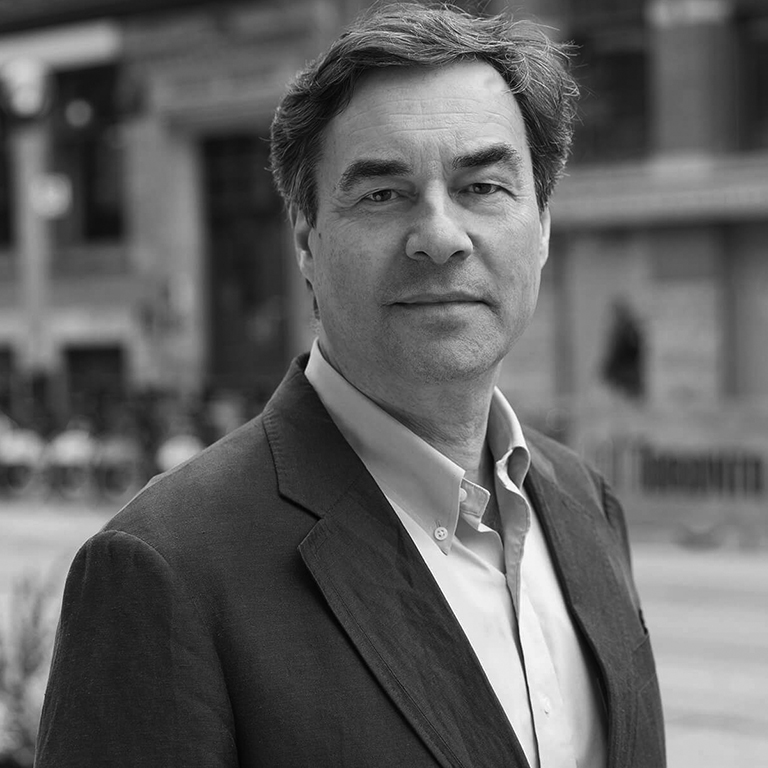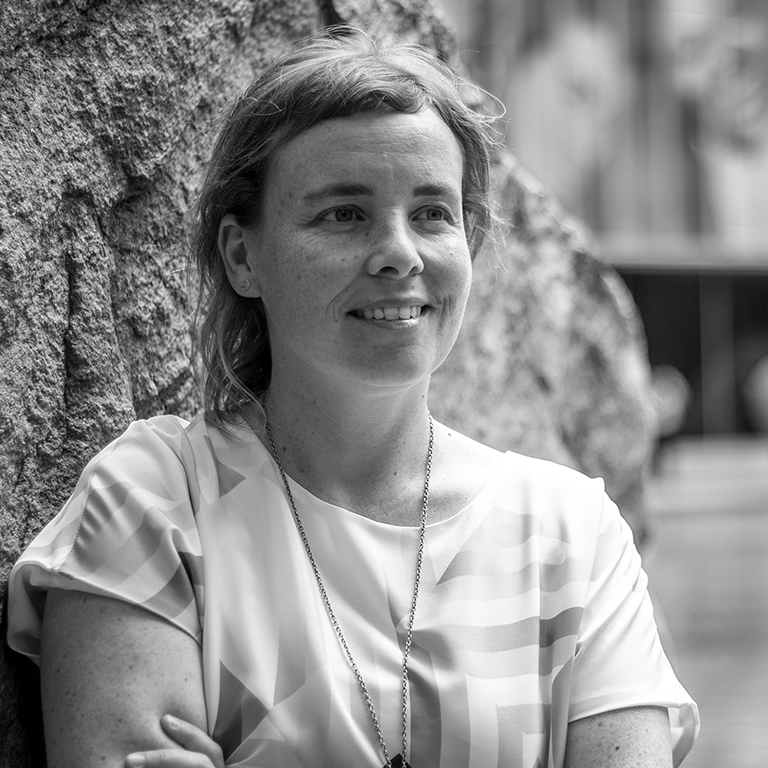
Greg Colucci
PRINCIPAL, DIAMOND SCHMITT ARCHITECTS
A principal at Diamond Schmitt, architect Greg Colucci is dedicated to advancing the firm’s mission of transforming lives through design—particularly within its healthcare portfolio—by helping effectuate positive outcomes for those who require them the most. His belief in the restorative power of good design to achieve these goals is manifest throughout an extensive portfolio of healthcare projects, including Hennick Bridgepoint Hospital, which received the Governor General’s Medal in Architecture.
Responsive client service as well as effective and insightful team leadership distinguish Greg’s 30-year tenure with the firm. These skills have been applied to other large, diverse, and complex projects, including five Alternate Finance and Procurement (P3) projects, York University’s Markham Centre Campus, the UHN Michener Institute’s medical simulation centre, six community centres, and multiple seaside developments in Eastern Europe. His interests include environmental sustainability, operational effectiveness, clarity of planning, elegance in detailing, and high standards of constructability.

Steven Fong
PRINCIPAL, STEVEN FONG ARCHITECT
Steven Fong is a Toronto-based educator and architect, and was a jury-selected recipient of the SHIFT2021: Resiliency/Architecture Challenge for
K-Town. He holds an academic appointment at the John H. Daniels Faculty of Architecture, Landscape and Design at University of Toronto, where he has variously contributed as a longstanding design studio critic and sometime administrator. Fong founded Office Make Good (OMG), a pivotal player in the development of Toronto's West Queen West retail, restaurant, and hospitality venues.
His eponymous architectural practice, well-known for contributions to many significant projects and collaborations with international firms, is most often recognized for an architectural oeuvre that derives from conditions that are small, quirky, and local. In addition to several published houses built on remnant urban sites, one awarded example of his work is the original Tokyo Smoke store—a tricked-out shipping container improbably stuffed into the fissure between two downtown buildings.

Terry Montgomery
PRINCIPAL EMERITUS, MONTGOMERY SISAM ARCHITECTS INC.
A founding principal of Montgomery Sisam Architects, Terry Montgomery's career spans more than four decades. Montgomery believes that architecture can humanize institutional settings and nurture a more meaningful sense of place to live, learn and heal. His work in healthcare emphasizes the importance of non-clinical spaces (both interior and exterior) to breathe new life into care environments and nurture physical and mental well-being.
His award-winning projects include the Centre for Addiction and Mental Health Alternate Milieu, St. John’s Rehab at Sunnybrook Hospital, the Southdown Institute, the Sisterhood of St. John the Divine Convent, Greenwood College School, Martin Luther University College, and Holland Bloorview Kids Rehabilitation Hospital.

Dr. Terri Peters
PHD, ARCHITECT (ARB), WELL AP & ASSISTANT PROFESSOR, TORONTO METROPOLITAN UNIVERSITY
Terri Peters is an assistant professor at Toronto Metropolitan University (formerly Ryerson) in the Department of Architectural Science where she teaches and supervises graduate students in both the architecture and building science programs. Dr. Peters is a registered architect in the United Kingdom, holds the WELL AP designation, and is a member of the 2021 WELL Concept Advisory for Lighting. Her current research focuses on building performance in health environments, pre- and post-occupancy evaluations, and intersections between architectural quality and inhabitant quality of life in long-term care homes. She is an affiliated researcher at Institut du Savoir Monfort in Ottawa.
Dr. Peters has authored and edited numerous publications, including more than 20 peer-reviewed publications about sustainable housing, and her 2021 paper “Biophilic Design Strategies in Long-Term Residential Care Environments for Persons with Dementia” was published in the Journal of Aging and Environment with co-author Dr. Stephen Verderber.

Dr. Michelle Wyndam-West
GPD, INCLUSIVE DESIGN AND DESIGN FOR HEALTH, OCAD UNIVERSITY & ADJUNCT ASSISTANT PROFESSOR, MCMASTER UNIVERSITY
Dr. Michelle Wyndham-West is an adjunct assistant professor in the Department of Health, Aging, and Society at McMaster University, as well as the Graduate Program Director of the Inclusive Design and Design for Health programs at OCAD University and an assistant professor in the Faculty of Design at OCAD University. She serves as a medical anthropologist specializing in design anthropology focusing on aging, equity, gender/intersectionality, health policy, and co-design.
Dr. Wyndham-West is researching housing instability among low-income older adults and aging in place in Hamilton, and equity-based policy frameworks for national housing policy development.
JURY FACILITATOR
John Stephenson is a principal at FormStudio Architects (Thunder Bay) and a past president of the Ontario Association of Architects (OAA), with extensive experience in housing, and care and treatment projects that cross the full continuum of care for seniors. During over 40 years practising architecture, he has developed a strong focus in the design, development, and ownership of independent living, retirement living, supportive housing, long-term care, and mental health rehabilitation projects. Stephenson’s portfolio also includes heritage studies, restoration, and adaptive reuse of heritage buildings, as well as educational, cultural, and commercial building projects in Northwestern Ontario, and includes a growing portfolio of work with Indigenous communities across Ontario. Over the past eight years, he has also been active in pursuing an Architecture Policy for Canada with the Rise for Architecture committee of the architectural regulators of Canada. This initiative focuses on issues of the broader public interest in architecture that intersect with concerns for the health and wellness of people and the planet as well as renewing and strengthening the social contract for which the profession of architecture is accountable.